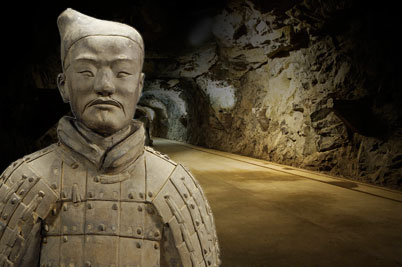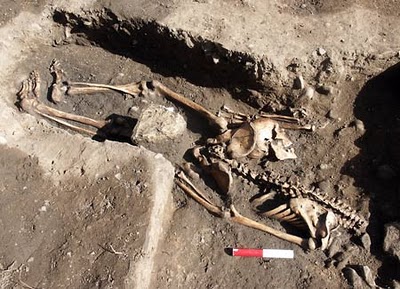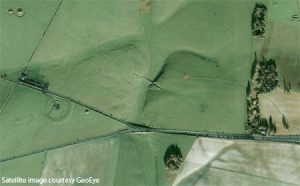 At the end of August the Terracotta Army will visit Sweden, and the soldiers will bring with them the story of China’s birth. In a unique location,the Terracotta Warriors and a collection of never-seen-before objects from simular gravesites will tell the story of how the vast Chinese empire was built on the idea of eternal power. This idea – stretching both space and time – was given shape through momumental burial sites and buildings, and the unification of China. The sophisticated empire that was established would last over two thousand years.
At the end of August the Terracotta Army will visit Sweden, and the soldiers will bring with them the story of China’s birth. In a unique location,the Terracotta Warriors and a collection of never-seen-before objects from simular gravesites will tell the story of how the vast Chinese empire was built on the idea of eternal power. This idea – stretching both space and time – was given shape through momumental burial sites and buildings, and the unification of China. The sophisticated empire that was established would last over two thousand years.
A selection of Terracotta Army statues and recent archaeological finds from five imperial burial sites will be exhibited in the rock shelter of the Museum of Far Eastern Antiquities in Stockholm, a unique setting deep in the earth and a formalbase of the Swedish Navy. The Rock Galleries are usually not open to the public.
“As a visitor one will get that sense of the first magical moment encountering the army face to face in the excavation situation”, says museum director Sanne Houby-Nielsen.
Considered one of the most important archaeological discoveries of the 20th century, the army is already world-famous. When on display in London the British Museum had to turn visitors away, despite staying open until midnight – but now the entire excavation team has got its much-deserved recognition too. This year’s ‘Prince of Asturias Prize for Social Sciences‘ has been awarded to the archaeological team which first discovered the Terracotta Warriors 36 years ago, and is still excavating at Xi’an today.
Promo video for the arrival of the Terracotta Army at Stockholm, showing the underground area in which they will be displayed.
The team was praised for devoloping a ‘multi-disciplined research project which allows the study of an important time in the development of the Chinese Empire’, considered by the jury to be a fundamental chapter in the history of civilisation.
Director of the archaeological team Xu Wiehong thanked the foundation and the members of his team, stating the prize belongs to each of them, but pointed out there are still difficulties- such as colour protection of the excavated warriors – and still a lot of excavating and research years to go.
The most recent dig started June last year and is ongoing, with the discovery 114 more terracotta warriors – it is thought there are up to8,000warriors and about 600horses- announced last week. The archaeologists also found 12 clay horses and a number of other artefacts, such as bronze weapons, wooden chariots and drums.
The ‘Terrakottaarm’ exhibition focusses on the period from 200BCand contains over 320 objects, on loan from eleven different museums and, of course, Terracotta Warriors. It runs from August 28, 2010 to January 16, 2011 at the Museum of Far Eastern Antiquities in Stockholm.



